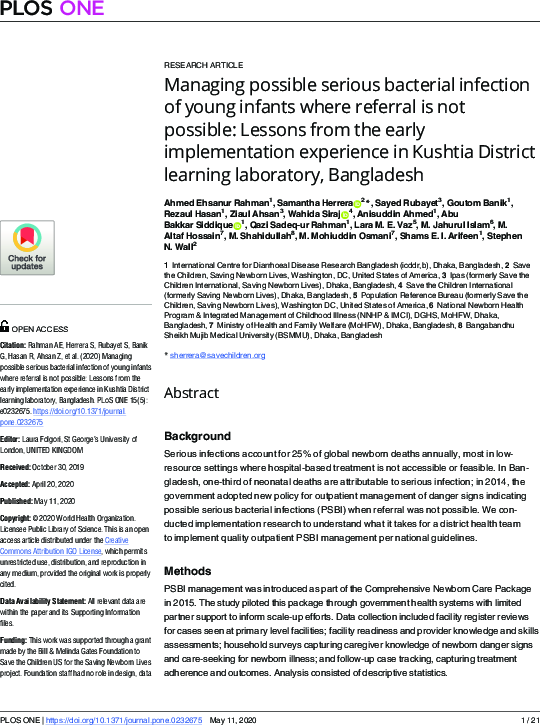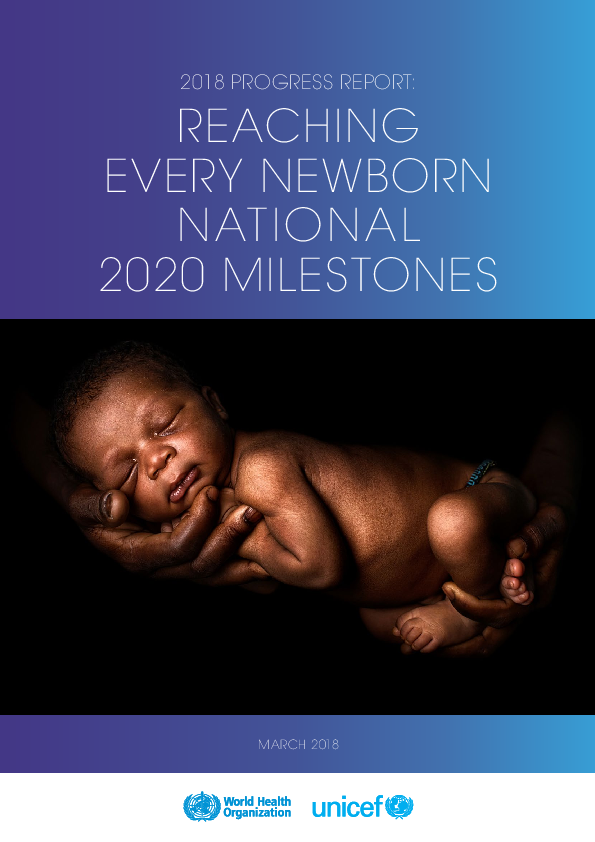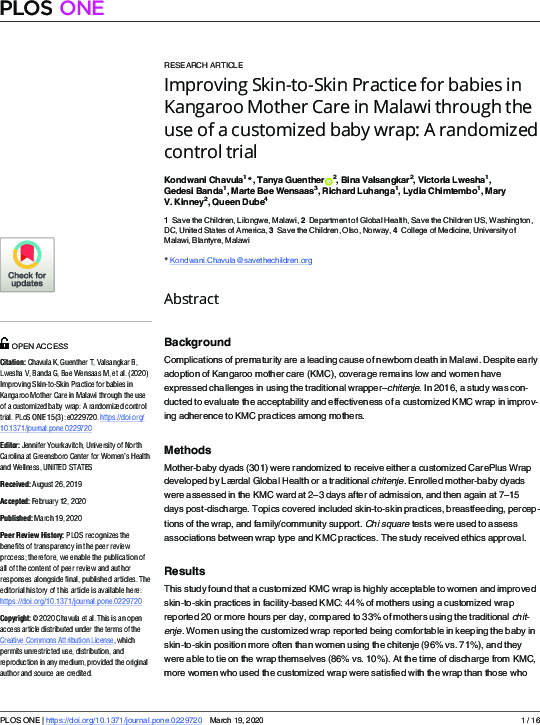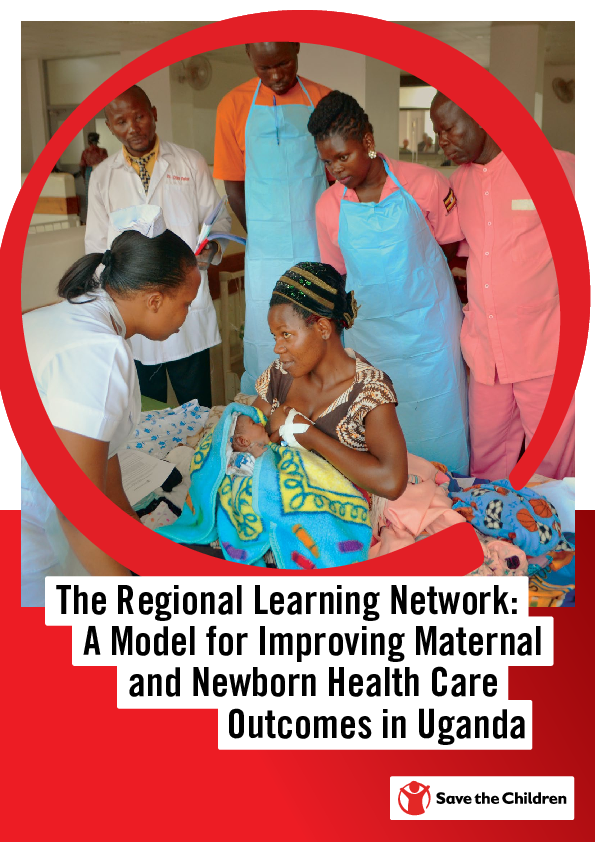
Study: Research
Managing Possible Serious Bacterial Infection of Young Infants where Referral is not Possible: Lessons from the early implementation experience in Kushtia District learning laboratory, Bangladesh
Publication year:
2020
English
Format:
pdf (1.5 MiB)
Publisher:
PLoS ONE
Background
Serious infections account for 25% of global newborn deaths annually, most in low-resource settings where hospital-based treatment is not accessible or feasible. In Bangladesh, one-third of neonatal deaths are attributable to serious infection; in 2014, the government adopted new policy for outpatient management of danger signs indicating possible serious bacterial infections (PSBI) when referral was not possible. We conducted implementation research to understand what it takes for a district health team to implement quality outpatient PSBI management per national guidelines.
Methods
PSBI management was introduced as part of the Comprehensive Newborn Care Package in 2015. The study piloted this package through government health systems with limited partner support to inform scale-up efforts. Data collection included facility register reviews for cases seen at primary level facilities; facility readiness and provider knowledge and skills assessments; household surveys capturing caregiver knowledge of newborn danger signs and care-seeking for newborn illness; and follow-up case tracking, capturing treatment adherence and outcomes. Analysis consisted of descriptive statistics.
Results
Over the 15-month implementation period, 1432 young infants received care, of which 649 (45%) were classified as PSBI. Estimated coverage of care-seeking increased from 22% to 42% during the implementation period. Although facility readiness and providers’ skills increased, providers’ adherence to guidelines was not optimal. Among locally managed PSBI cases, 75% completed the oral antibiotic course and 15% received the fourth-day follow-up. Care-seeking remained high among private providers (95%), predominantly village health doctors (over 80%).
Read full abstract
Authors
View & Download
Document information
Publisher
Authors
Ahmed, Anisuddin, Ahsan, Ziaul, Arifeen, Shams E. I., Bakkar Siddique, Abu, Banik, Goutom, Hasan, Rezaul, Herrera, Samantha, Hossain, Mohammed Altaf, Islam, Mohammed Jahurul, Osmani, Mohammed Mohiuddin, Rahman, Ahmed Ehsanur, Rahman, Qazi Sadeq-ur, Rubayet, Sayed, Shahidullah, Mohammad, Siraj, Wahida, Vaz, Lara M. E., Wall, Stephen N.
Format
Content type
Country
Region
Rights
© Author/Publisher
Found a mistake? Help us improve!
If you have noticed a document assigned to the wrong author or any other inaccuracies, let us know! Your feedback helps us keep our data accurate and useful for everyone.
Related Documents
Showing 4 of 5
Share
Link





